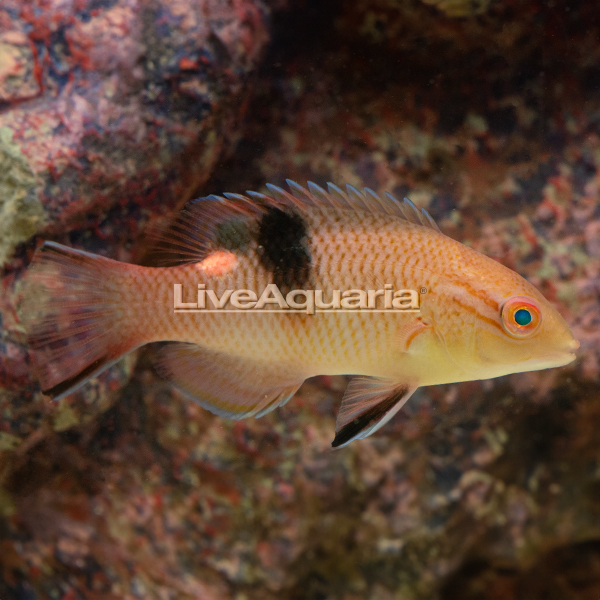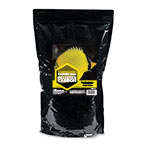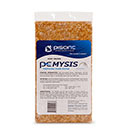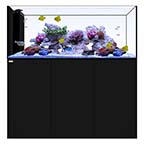
Quick Stats
What do these Quick Stats mean? Click here for more information
What do these Quick Stats mean? Click here for more information
Overview
The Blackbar Hogfish Bodianus speciosus lives in algae-rich areas on rocky reefs. They will forage for food with elongated snouts that help them root in the sediment and strong jaws with small protruding teeth that are efficient tools in eating hard shelled crustaceans. Their distinctive dorsal fin is comprised of multiple fins: three or four longer dorsal spines toward the front and a series of shorter spines behind. Hogfish are sequential hermaphrodites and are born female, with the ability to become male after about three years if living in a harem with no males. The male will protect the harem.
Juveniles are pale in color with hues ranging from gray, brown or reddish brown and have a black spot located midway along the base of the dorsal fin. Females will remain this color, while males will mature to a deeper color and have a black bar that runs vertically and is located behind the pectoral fins. Coloration is darker anterior to this marking and lighter posteriorly. They are ideally camouflaged to live near sand and corals.
This member of the Labridae family is a carnivore that feeds on hard shell invertebrates, urchins, and gorgonians in nature. Their diet in the aquarium should include crustacean and other meaty foods formulated for marine carnivores.
Approximate shipping size: Small 2” to 2 ½”, Medium 2-1/2" to 3-1/2"












